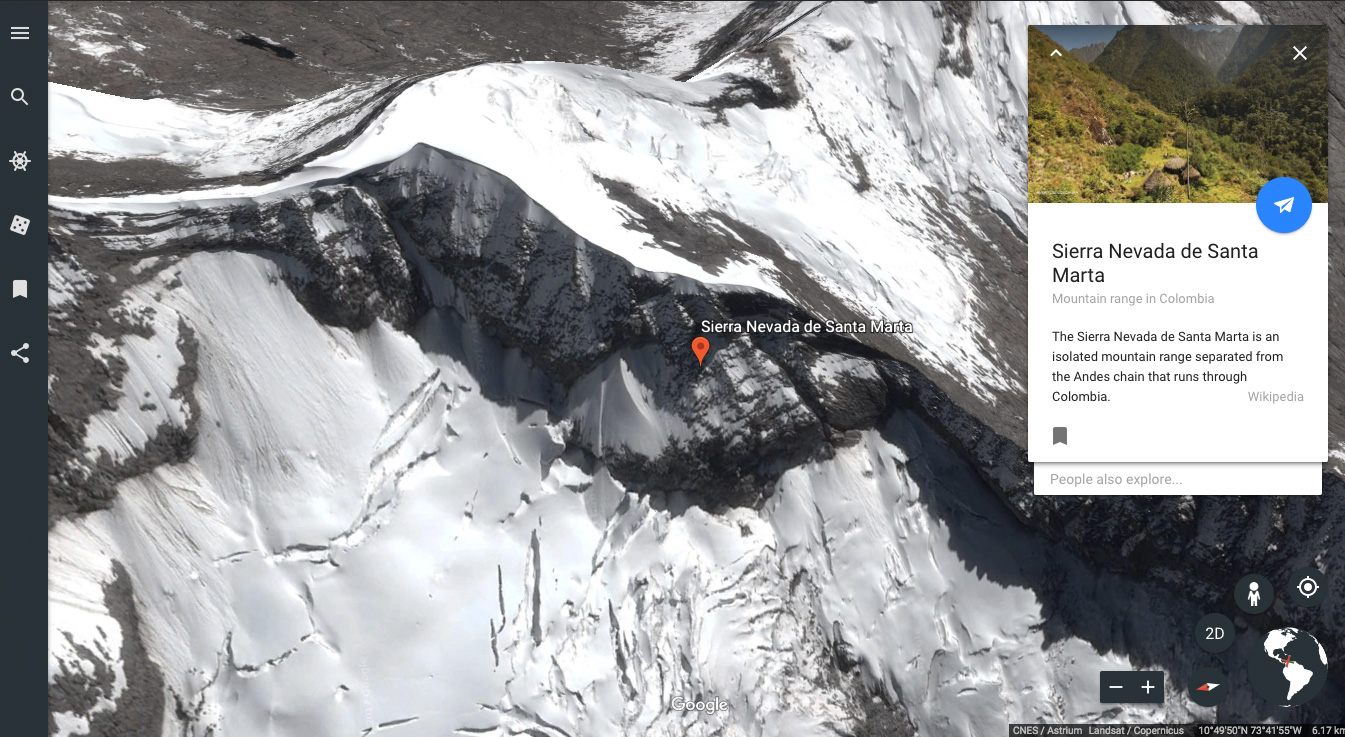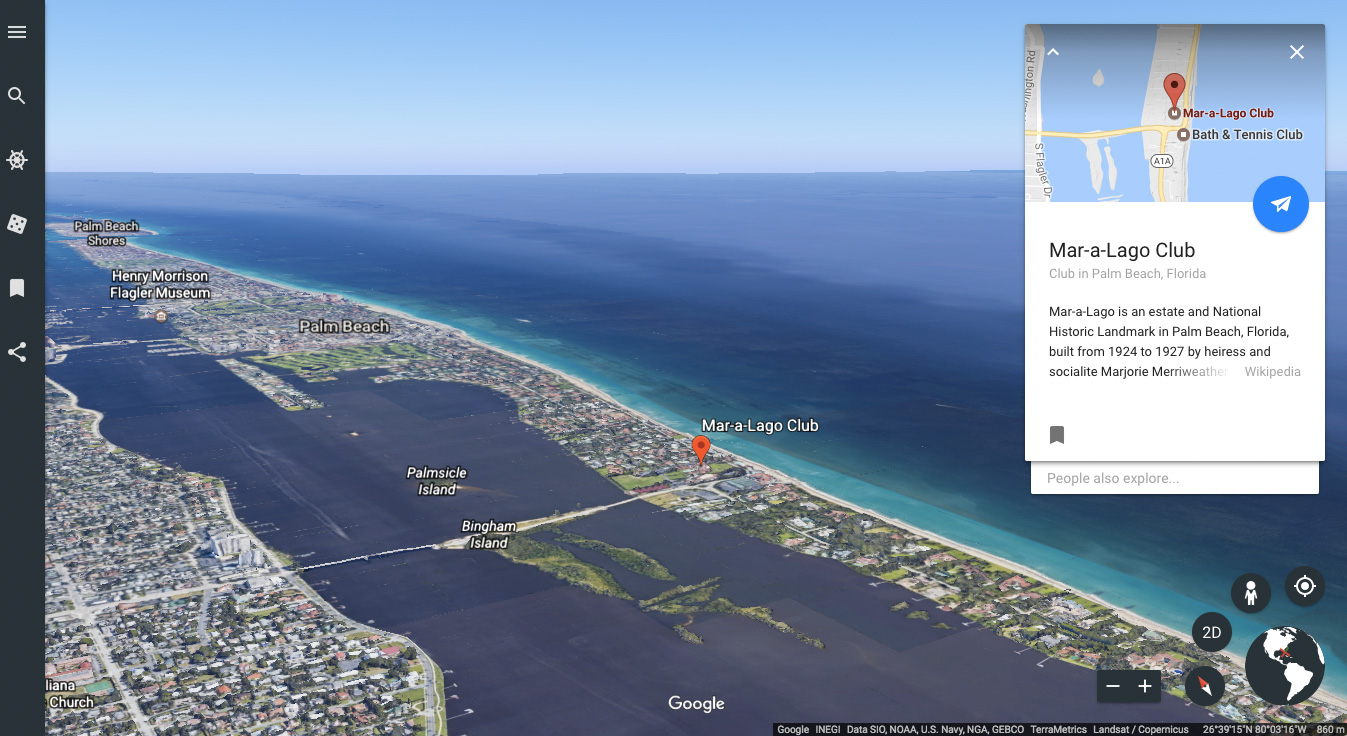Google Earth feeds your wanderlust with ‘Voyager’ stories
There are two things you should never do if you want to maintain productivity: start clicking on links in Wikipedia, or open Google Earth. There are many, many other ways to waste time on the internet but the amount of work hours lost between those two is probably enough to make most managers weep. Your boss won’t be too pleased, then, to learn that Google Earth’s latest update, revealed today, ratchets up its time-killing potential several notches.
We’ve come a long way since the earliest versions of Google Earth that basically placed a virtual globe in your desktop with some basic mapping and 3D tools. Today’s revision sees a slew of new features that feel both exciting, and long overdue at the same time. The headline news, in my opinion, isn’t technically a feature at all, but the fact that Google Earth is no longer a standalone app for desktop and mobile users, and can be accessed right from a browser (perfect for Chromebooks and education).
There are, of course, a lot of new things you can do with Google Earth that will give even the most experienced virtual tourist something fresh to explore. The first change you’ll notice is the home page. No matter what machine you choose to open Google Earth on, you’ll be presented a menu offering a series of icons: A ship’s wheel, a die, a familiar highlight tag and a share symbol. The last two are somewhat self explanatory, but it’s the first two where most of the fun stuff is.
The ship’s wheel leads you to a section called “Voyager.” As that name suggests, this is all about discovery. Google Earth has kinda always been about finding and investigating, but Voyager is about enabling that encouraging that with curated content. Yes, even Google Earth isn’t immune to the current trend for “stories,” or in this case, curated tales from around the world (literally). These stories are essentially themed journeys around the planet peppered with rich media such as 360 videos, and Street View (including inside buildings and underwater).

Google partnered with the likes of DigitalGlobe and the BBC at launch to provide some of the more detailed stories, but we’re told these will be regularly updated with new and increasingly more curious adventures. For now, though, the selection of around 40 available looks pretty good, with everything from touring Hemmingway’s favorite haunts to a chance to meet girl muppets around the world (yep, check it out, much fun). Each “voyage” is usually about ten “locations” long, complete with swooping transition around the planet as you progress to the next spot.
Two other features that come along with Voyager, depending how you view it, are “Itineraries” (basically city guides with points of interest), and the option to send a virtual postcard from one of these locations. The postcard feature is unique to mobile (on desktop you’ll just get a share link). A postcard is basically sending an image of a landmark from anywhere on the itinerary. Handy for showing people where to meet perhaps, or sharing a memory with family from a long-forgotten vacation.
Once you’re done diving with sharks or exploring Charles Dickens’ favorite pub, what happens if you run out of things to look at? Well, if you do, first, shame on you. Second the “I’m feeling lucky” feature (represented by the die icon) is for you. Google’s been serving up random webpages with a button of the same name since as long as most of us can remember; Earth’s version is much the same. Click the die, and you’ll be digitally transported to a far-flung corner of the globe where Google will also serve up (the now ubiquitous) “cards” with local trivia.
Google says it has identified about 20,000 locations so far, using its Knowledge Graph to serve up the info on “Knowledge Cards.” Much like stories, these locations will also be continually refreshed, so expect the number of random places (deliberately chosen off the beaten track) to grow with time. It’s also possibly the best generator for spontaneous vacations we can think of. Especially if the location it takes you to doesn’t initially convince you, simply click the paper plane icon on the Knowledge Card, and you’ll be whisked off somewhere nearby with more info on that location as well.

Google Earth has always been a great place to quench your wanderlust. As one company representative said “You use Maps to find your way, Earth to get lost.” This has never been more true than with the current iteration. In many ways it feels like the beginning of a constantly evolving, flexible version of Encarta. Right now you can’t add your own stories, but you can be sure those types of features will be coming soon enough. When I asked about the potential for a “Google Mars” or a “Google Solar System,” one representative gave me the tortured look of someone that’s excited about something, but cannot say (both of these somewhat exist already though don’t forget).
There are, of course, a few things that the new Google Earth is not. And one of those is VR-friendly. It is still available on Steam, but given Google’s investment in this area (DayDream, YouTube 360 etcetera), many hoped that today’s announcement might have had even more of a virtual reality flavor. Alas, not this time, but again, you can be fairly sure this is somewhere on the roadmap.
For now though, Google Earth is growing beyond its position as a desktop curiosity, research tool and data hive, and into the world of original content, discovery and education. The fact that it now lives within your browser is no small thing. It’s Chrome only for now, but Google did say that the base technology (Web Assembly) will soon be fully supported across all four main browsers, at which point you can use Google Earth for web on whatever tickles your fancy.
On mobile you’ll still need to use a dedicated app, but you probably would prefer that anyway. And if you’re worried that the move to a browser tab might mean compromises, don’t be. Google claims about 90-percent of the codebase is the same, no matter how you choose to access it.
(89)
















